Have you ever paused to wonder about the journey your food takes before it lands on your plate?

Image by Adeesha Hack via Canva
That salad you enjoyed for lunch, the bread you toasted for breakfast, or the chocolate you indulge in after a long day — each has a story that stretches far beyond the supermarket shelves.
Knowing how food ends up on your plate is essential. It allows for informed choices that can promote healthier diets, support ethical practices, and reduce environmental impact, ultimately contributing to a more sustainable and transparent food system.
Stages of the Food System
The food system typically involves five key stages, each representing a critical part of the journey from production to consumption (some resources will document the stages differently, resulting in more or fewer stages).
 Image by Adeesha Hack via Genially
Image by Adeesha Hack via Genially
Each of these stages is interconnected, and decisions made at one stage can have significant effects on the others, influencing everything from food quality and safety to environmental sustainability and social equity.
To get an idea how of food moves through the food system, watch this 1:52 minute video: The Extraordinary Life of Strawberry.
Stage 1: Production
 Image by Adeesha Hack via Genially
Image by Adeesha Hack via Genially
In the production stage, food is grown or raised. It includes farming, fishing, and livestock raising. This stage focuses on cultivating crops, raising animals, and harvesting natural resources. Factors like soil health, water use, and farming practices play a crucial role here.
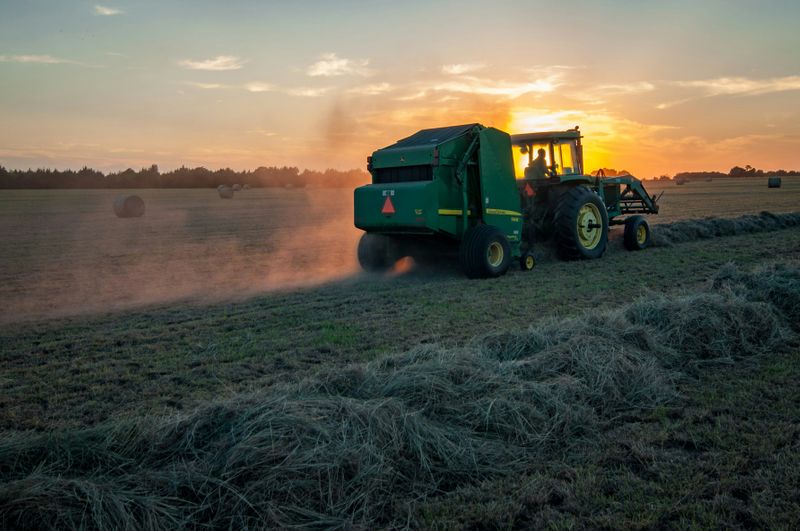 Photo by Jed Owen on Unsplash
Photo by Jed Owen on UnsplashStage 2: Processing/Manufacturing
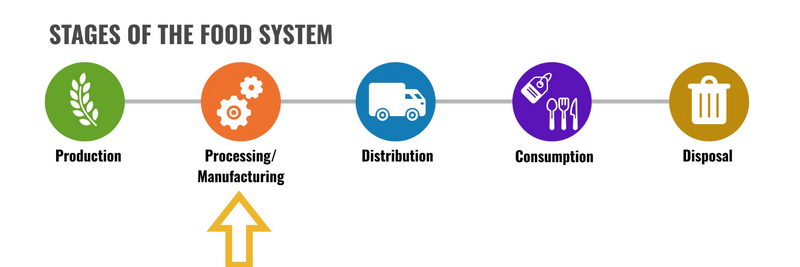 Image by Adeesha Hack via Genially
Image by Adeesha Hack via Genially
In theprocessing/manufacturing stage, food is harvested, and/or raw food products are transformed into the food items we recognize. This stage includes cleaning, sorting, milling, preserving, packaging, and often, cooking or preparing foods to make them ready for distribution.
Processing can range from minimal (e.g., washing and packaging fresh produce) to extensive (e.g., making processed snacks or ready-to-eat meals).
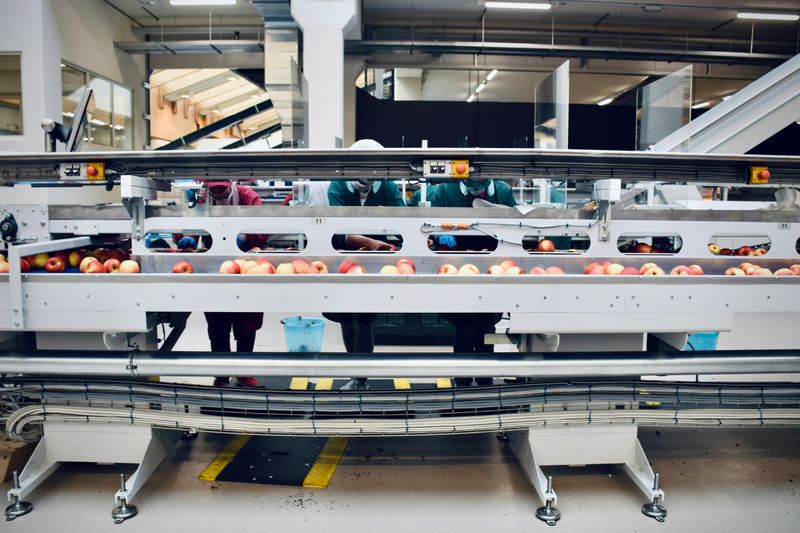 Photo by Arno Senoner on Unsplash
Photo by Arno Senoner on UnsplashStage 3: Distribution
 Image by Adeesha Hack via Genially
Image by Adeesha Hack via Genially
In the distribution stage, once food is processed, it needs to be transported from where it’s produced to where it’s consumed. This stage involves logistics, storage, and transportation, ensuring that food products reach markets, grocery stores, restaurants, and eventually, consumers.
Cold chains (systems to keep food products at a consistent/ low temperature), inventory management, and transportation networks are crucial here.
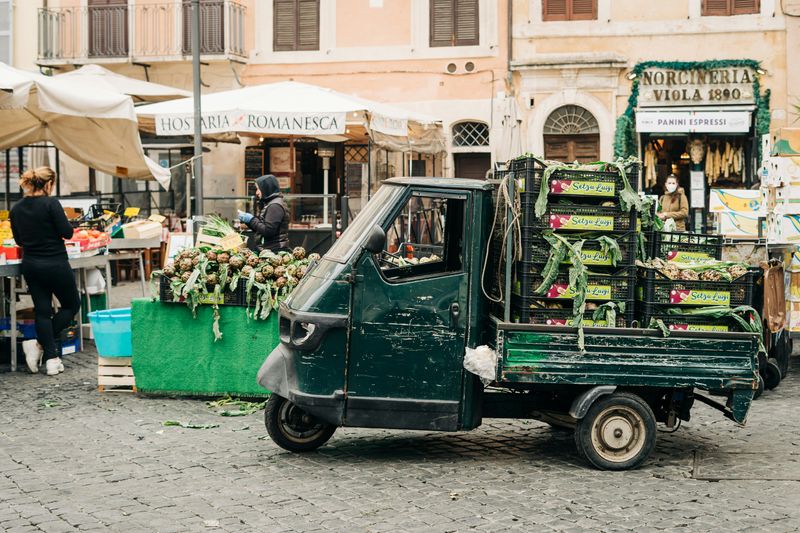 Photo by Gabriella Clare Marino on Unsplash
Photo by Gabriella Clare Marino on UnsplashStage 4: Consumption
 Image by Adeesha Hack via Genially
Image by Adeesha Hack via Genially
At the consumption stage, consumers finally interact with food. This is the stage where food is purchased, prepared, and eaten by consumers. It includes all the activities related to shopping, meal planning, cooking, and dining. This stage is influenced by cultural preferences, dietary needs, convenience, and economic factors.
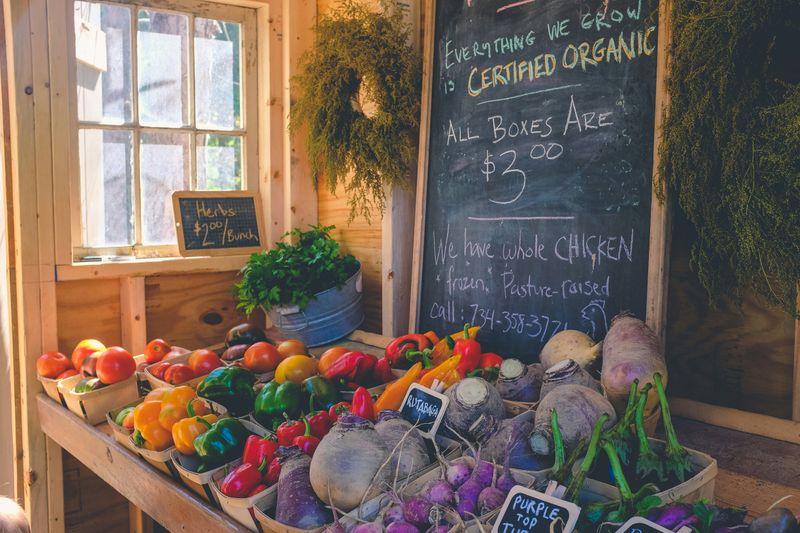 Photo by Kenny Eliason on Unsplash
Photo by Kenny Eliason on UnsplashStage 5: Disposal
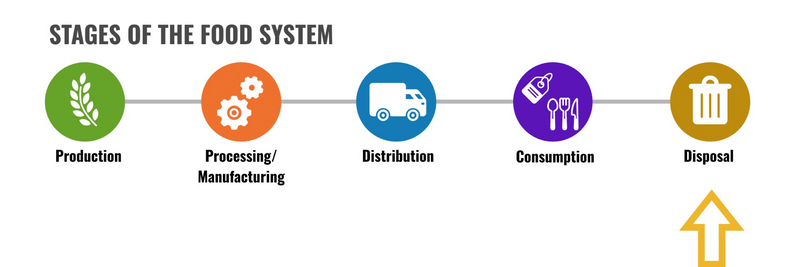 Image by Adeesha Hack via Genially
Image by Adeesha Hack via Genially
The final stage, disposal, involves what happens to food that isn’t consumed. Food can be wasted at any part of the food system: at farming, in factories, during transportation, and in your home.
 Photo by Joshua Hoehne on Unsplash
Photo by Joshua Hoehne on UnsplashQuiz: Put the Steps in Order
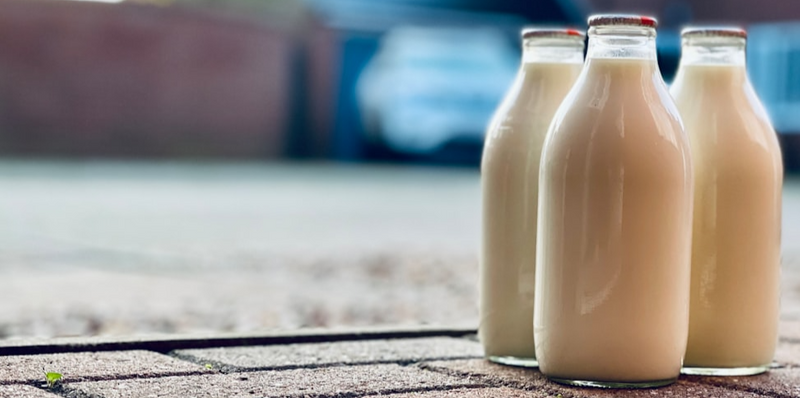 Image from Unsplash
Image from Unsplash
The following steps are an example of how milk moves through the food system. However, the steps aren't in the correct order of the stages of the food system.
Consumers purchase milk and bring it home.
Cows are raised on farms, where they are milked regularly.
The raw milk is transported to a facility to be "pasteurized" (heating the milk to kill harmful bacteria), "homogenized" (to ensure the milk has a uniform texture), and packaged.
Unused/spoiled milk is thrown away.
The processed and packaged milk is distributed to food stores.
Quiz
What is the correct order of the steps, according to the stages of food system.
Take Action
 Image from Unsplash
Image from Unsplash
Your feedback matters to us.
This Byte helped me better understand the topic.
